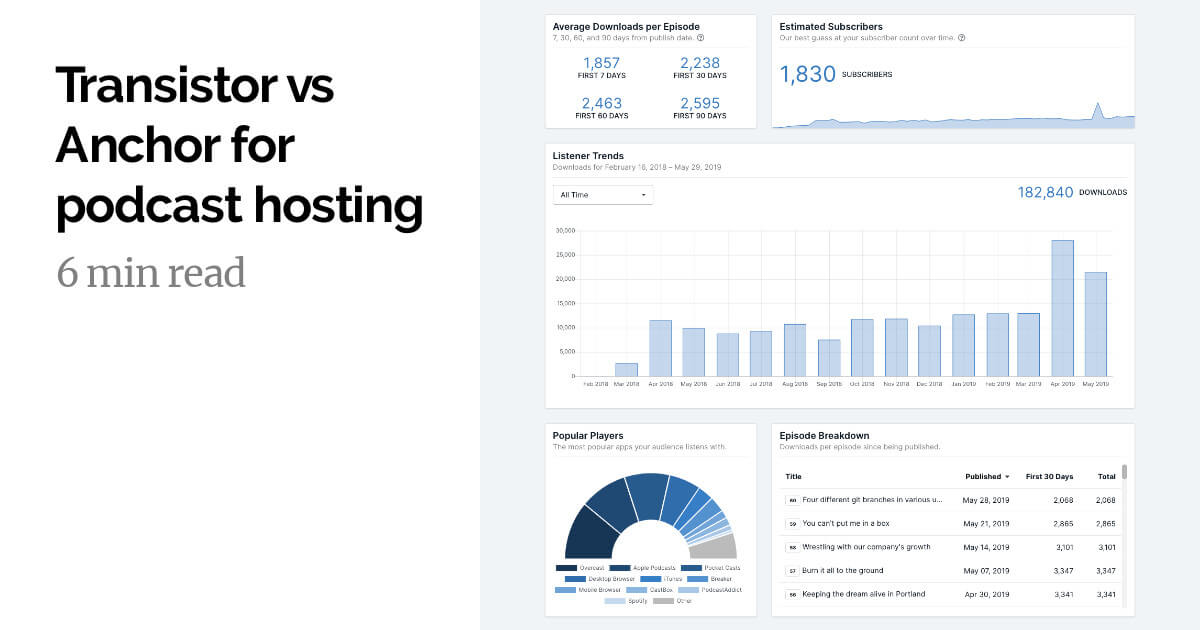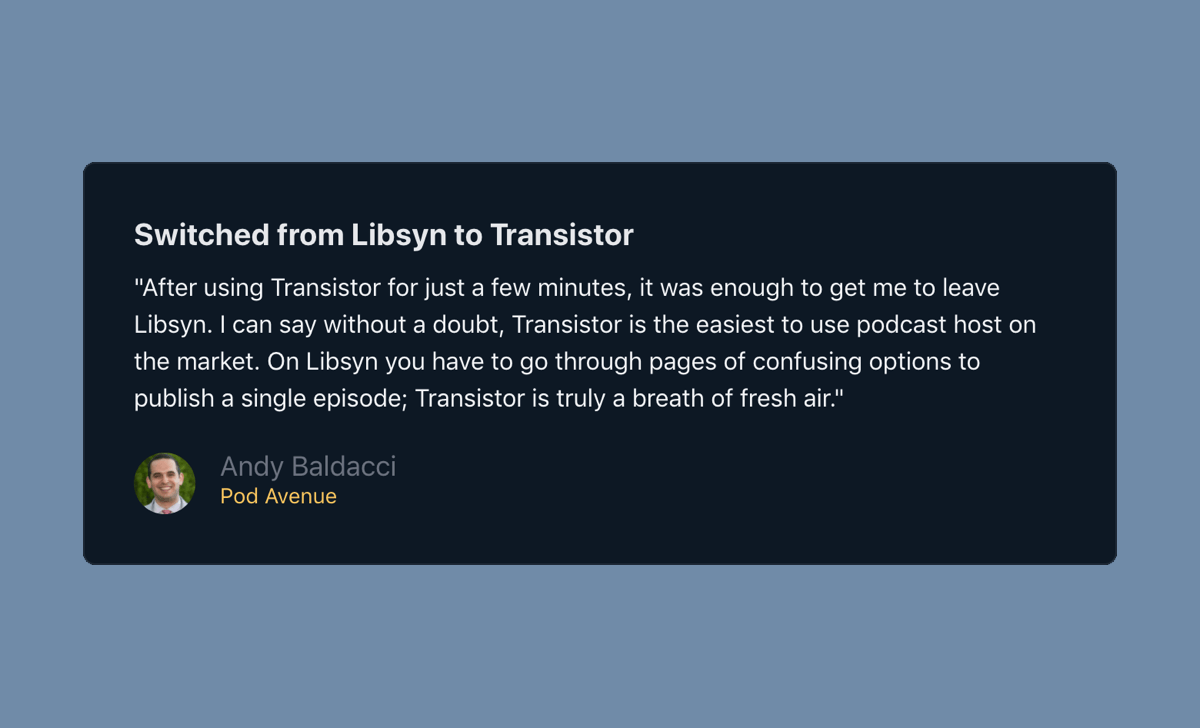

With Transistor, the podcast distribution process is streamlined. Were it not for this feature, you would have to visit all of the websites you want to submit your podcast to, find the submission form, verify the email they’ve sent you, and basically waste hours of your time. Transistor allows podcast owners to submit their audio shows to a network of major podcast sites such as Google Podcasts and with the click of a button.
#Transistor podcast how to#
How to embed your podcast in MailChimp – automatically email new episodes Streamlined Podcast Distribution Transistor has made a simple info tutorial that breaks down the MailChimp integration process in a few simple steps, which you can check below: For MailChimp specifically, you should start a new automated email campaign and tap ‘share blog post updates’ after that, simply enter the URL of your podcast’s RSS feed. The process is fairly simple, but it requires an active account on supported newsletters. Transistor makes this job remarkably easier, as it offers integrations with various newsletter companies, such as HubSpot or MailChimp. Usually, podcast owners share the news on their social media pages and web-scrape for contacts of previous visitors before emailing them. Spreading the word that a new episode has aired or that a new podcast has been launched is paramount to its growth.

#Transistor podcast update#
To top it all, these websites are automated and will update whenever new episodes are introduced to the series. Furthermore, Transistor offers several fully-customizable templates from which you can choose. All of these websites can be accessed from both PCs and smartphones. They feature the core website elements, such as a homepage, dedicated landing pages for all episodes, a brief introduction of each podcast, and a ‘Subscribe’ page. If this sounds too good to be true, we should note that these new websites are fairly basic.

Transistor’s new podcast website builder is highly intuitive, but fear not, they have a great tutorial to ensure you can make the most of this feature. The Podcast Website Builder allows you to create a dedicated website for all of your podcasts what’s even better is that this is a browser-based feature that doesn’t require installation or any additional subscriptions. This is one of the newest features of Transistor that was introduced earlier this year, and it’s safe to say that it’s among the most valuable tools this platform has to offer. The importance of this feature really comes through when comparing Transistor to other reputable podcast hosting services, such as Buzzsprout, Simplecast, or Podbean, all of which charge extra for accounts that support ten or more podcasts. There are no extra or hidden fees whatsoever, even if you were to add dozens of podcasts to your account. It provides a beginner user room for future growth while enabling veteran podcast owners to import and host as many episodes from as many podcasts as they want. In my opinion, the fact that you can host as many podcasts as you want from a single account is this service’s strongest selling point. Should you have any questions about Transistor’s features, interface, or podcast hosting in general, there’s a wealth of learning resources available on the platform’s Blog section. To keep it approachable for beginner podcast hosts, all of the features are very easy to use and require minimal technical experience to properly utilize. Transistor’s versatility is one of the main reasons why it’s widely acclaimed as one of the best podcast hosting platforms online. So without any further ado, let’s take a quick glance at what you should expect: In this Transistor podcast hosting review, we wanted to share with you all the reasons why we deem Transistor to be the best podcast hosting service around. That’s where Transistor comes into play – one of the most reputable podcast hosting platforms on the current market, which checks all the boxes we’ve just mentioned. If you want to know how well your podcasts are doing, you’ll need detailed analytics to crunch the numbers accurately. You will need a good hosting service, distributors to make your podcast available to the masses, as well as special tools to embed your podcasts on websites and pages to expand your reach. However, the process is not as simple as uploading a phone recording to SoundCloud or your YouTube channel and just waiting for hits and downloads to miraculously start piling up. If you’ve ever had a great podcasting idea, now is probably the best time to get started. Becoming a podcast host is much easier than scoring an on-air gig at a radio station, and you don’t need very expensive gear to start


 0 kommentar(er)
0 kommentar(er)
